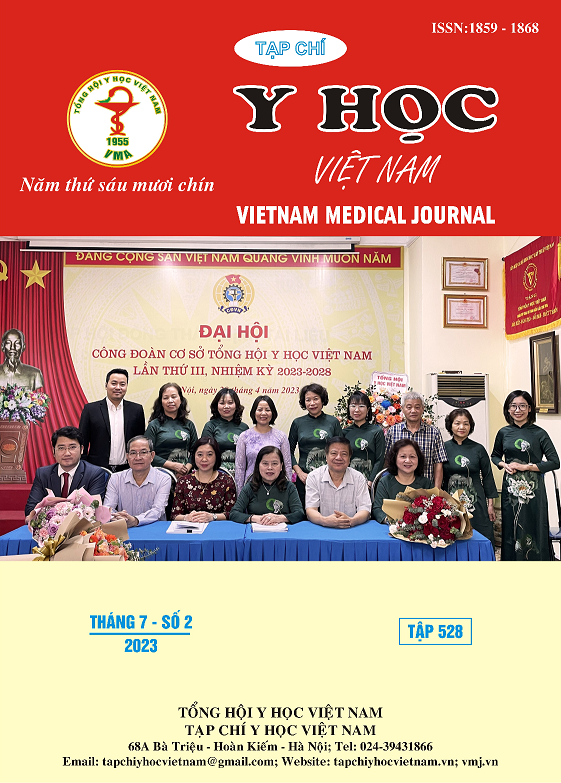THE STATUS KNOWLEDGE OF NURSING STUDENTS ABOUT CONTRACEPTIVE METHODS AT NAMDINH UNIVERSITY OF NURSING IN 2022
Main Article Content
Abstract
Objective: Describe the status of students' knowledge about contraception. Research subjects: First-year nursing students of NamDinh University of Nursing. Results: 123 students participated in the study in which 95.9% of students know at least one of the contraception methods. There are 7 contraceptive methods that students know: condoms, intra uterine devices, birth control pills, spermicides, sterility, extra-vaginal ejaculation, and calculate menstrual cycles. Female students with good knowledge are 76.5%, 3,575 times higher than male students. Students who have or have had a lover with good knowledge is 77.6%, 2,078 times higher than the group without a lover. The group of students who learn information through the newspaper, television, and the internet have a good knowledge rate of 82.1%, which is 4,842 times higher than that of the group of students who access information in other ways. Conclusions: 95.9% of 123 students know at least 1 of 7 contraceptive methods. The difference is statistically significant in the group of students who have good knowledge about sex, have or have had a lover; with the information approach (p<0.05).
Article Details
Keywords
contraceptive methods
References
2. Nguyễn Thanh Phong (2012). Thực trạng kiến thức về sức khỏe sinh sản của họ sinh - sinh viên năm nhất trường Cao đẳng Y tế Hà Nội. Tạp chí thông tin Y dược,01/2012,25-28
3. Ngô Thoại Dương, Nguyễn Thannh Hằng và cộng sự (2014). Các yếu tố nguy cơ của nạo phá thai nhiều lần và ý nghĩa đối với việc giải quyết tình trạng mang thai ngoài ý muốn ở Việt Nam. Tạp chí Phụ khoa & Sản khoa Quốc tế, 123.
4. Reina M.-F., Ciaravino H., Llovera N. et al (2010). Contraception knowledge and sexual behaviour in secondary school students. Gynecological Endocrinology, July 2010, 26(7), 479-483.
5. Nguyễn Thanh Phong và cộng sự (2013). Nghiên cứu kiến thức, thái độ và thực hành về một số biện pháp tránh thai của sinh viên trường Cao đẳng Y tế Hà Nội, năm 2013, Tạp chí Phụ sản tháng 05/2014, 12(02), 207-210
6. Shah K H Afsha A. Bali ĩ. et al (2017) Menstrual Disorders from Puberty to Early Adult Age: A Cross - Sectional Survey Journal of Clmteal & Diagnostic Research, 11(10).
7. Bộ Y tế (2018). Niêm giảm thống kê Y Tế. Chăm sóc sức khoẻ sinh sản, 2017 -2018.143.
8. Tổng cục Dân số - Kế hoạch hoá gia đình. Quỹ Dân sỗ Liên hợp quốc (2010) với nội dung chủ yếu về Chiên lược Dân sồ và sức khoẻ sinh sản Việt Nam giai đoạn 2011 -2020. 1 -15.


